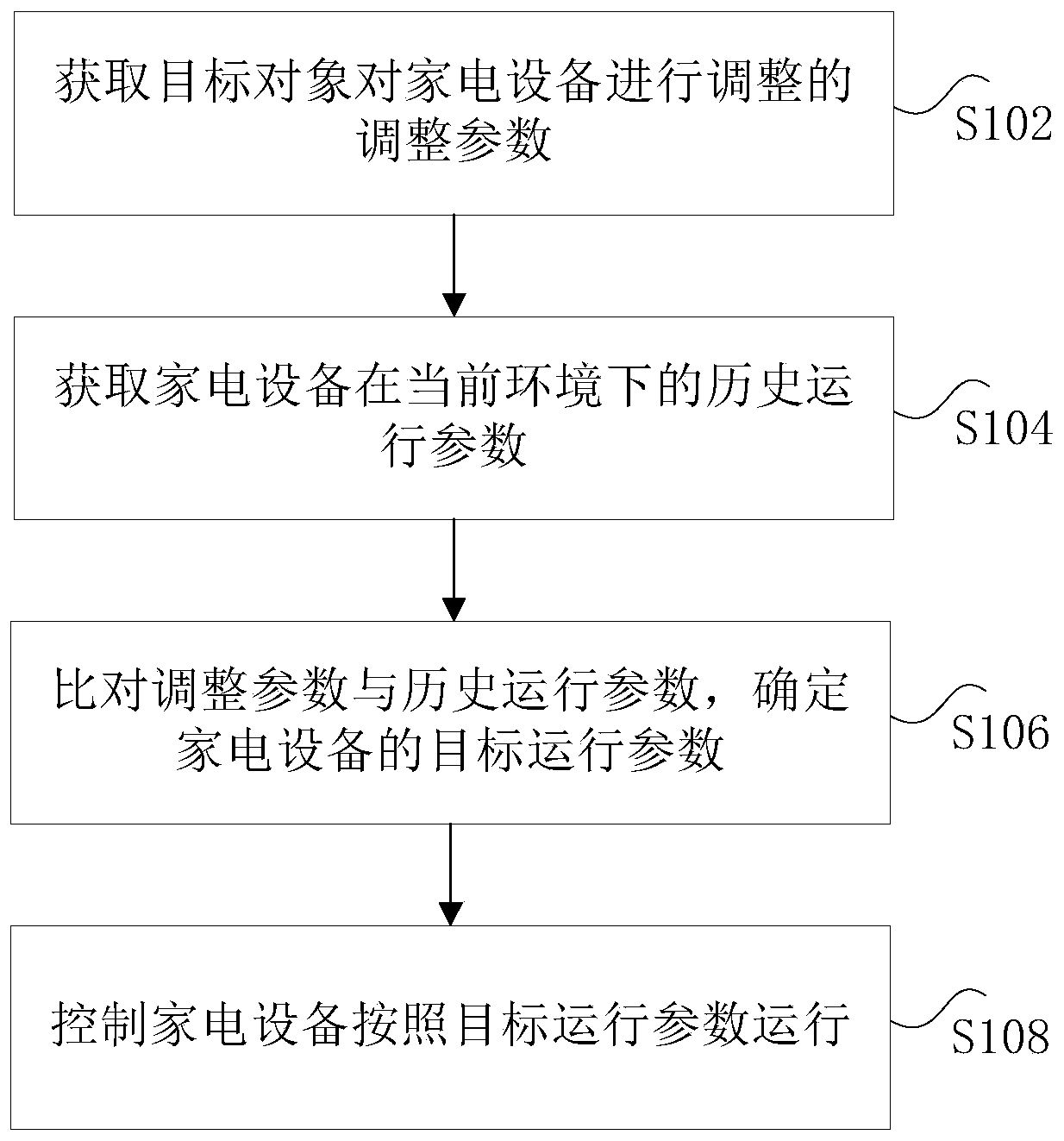Method and device for controlling household appliances and household appliances
A technology of home appliances and parameters, applied in the direction of mechanical equipment, etc., can solve the problems of home appliances that cannot meet user needs and misoperation, and achieve the effect of improving comfort and avoiding misoperation
- Summary
- Abstract
- Description
- Claims
- Application Information
AI Technical Summary
Problems solved by technology
Method used
Image
Examples
Embodiment 1
[0029] According to an embodiment of the present invention, an embodiment of a method for controlling household appliances is provided. It should be noted that the steps shown in the flow charts of the drawings can be executed in a computer system such as a set of computer-executable instructions, and, Although a logical order is shown in the flowcharts, in some cases the steps shown or described may be performed in an order different from that shown or described herein.
[0030] figure 1 is a flowchart of a method for controlling household electrical appliances according to an embodiment of the present invention, such as figure 1 As shown, the method includes the following steps:
[0031] Step S102, acquiring the adjustment parameters for the target object to adjust the household electrical appliances.
[0032] It should be noted that the above-mentioned target objects are users who control household electrical appliances, wherein household electrical appliances include but...
Embodiment 2
[0062] According to an embodiment of the present invention, an embodiment of a household electrical appliance is also provided, wherein, image 3 is a schematic structural diagram of a household electrical appliance according to an embodiment of the present invention, such as image 3 As shown, the home appliance includes: a collection unit 301 , a processing unit 303 and a control unit 305 .
[0063] Among them, the collection unit 301 is used to obtain the adjustment parameters for the target object to adjust the household appliances, and collect the current environment parameters in the current environment; the processing unit 303 is used to determine the historical operation of the household appliances in the current environment according to the current environment parameters parameters, and compare the adjusted parameters with the historical operating parameters to determine the target operating parameters of the household electrical appliances; the control unit 305 is us...
Embodiment 3
[0072] According to an embodiment of the present invention, an embodiment of an apparatus for controlling a household electrical appliance is also provided, wherein, Figure 4 is a schematic structural diagram of a device for controlling household electrical appliances according to an embodiment of the present invention, such as Figure 4 As shown, the device includes: a first acquisition module 401 , a second acquisition module 403 , a determination module 405 and a control module 407 .
[0073] Among them, the first acquisition module 401 is used to acquire the adjustment parameters for the target object to adjust the home appliance; the second acquisition module 403 is used to acquire the historical operating parameters of the home appliance in the current environment; the determination module 405 is used for comparison Adjusting parameters and historical operating parameters to determine the target operating parameters of the home appliance; the control module 407 is used ...
PUM
 Login to View More
Login to View More Abstract
Description
Claims
Application Information
 Login to View More
Login to View More - R&D
- Intellectual Property
- Life Sciences
- Materials
- Tech Scout
- Unparalleled Data Quality
- Higher Quality Content
- 60% Fewer Hallucinations
Browse by: Latest US Patents, China's latest patents, Technical Efficacy Thesaurus, Application Domain, Technology Topic, Popular Technical Reports.
© 2025 PatSnap. All rights reserved.Legal|Privacy policy|Modern Slavery Act Transparency Statement|Sitemap|About US| Contact US: help@patsnap.com



